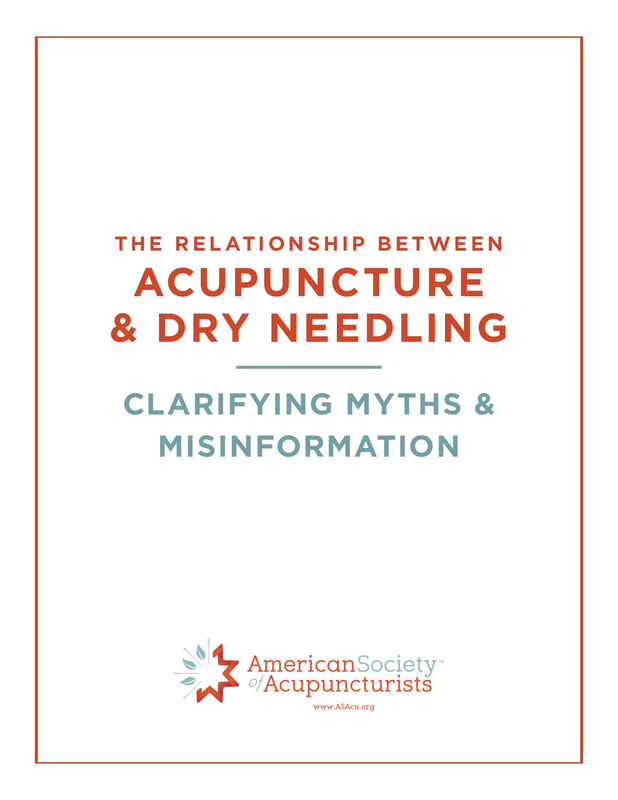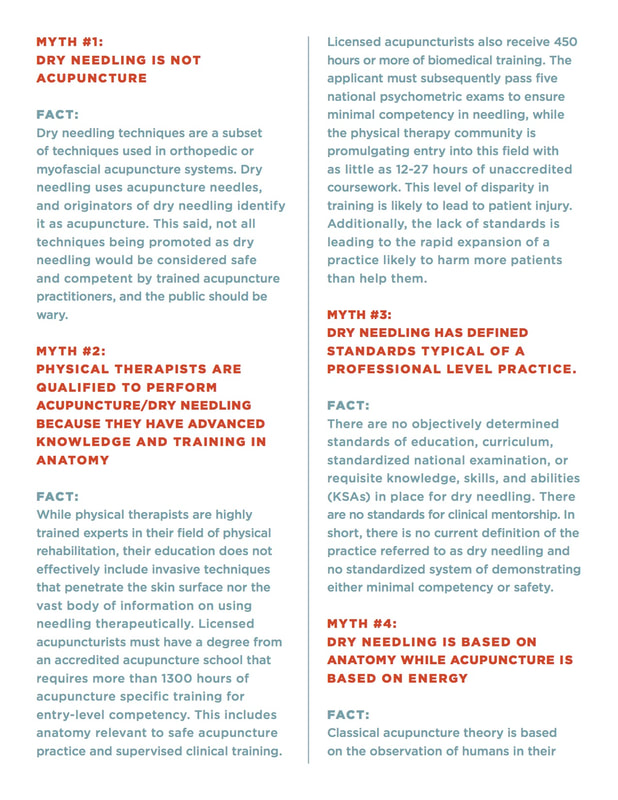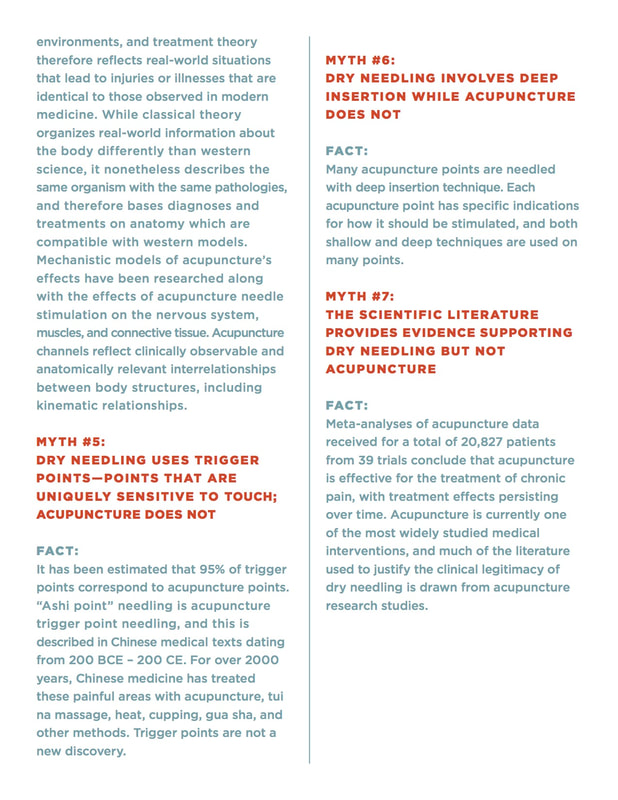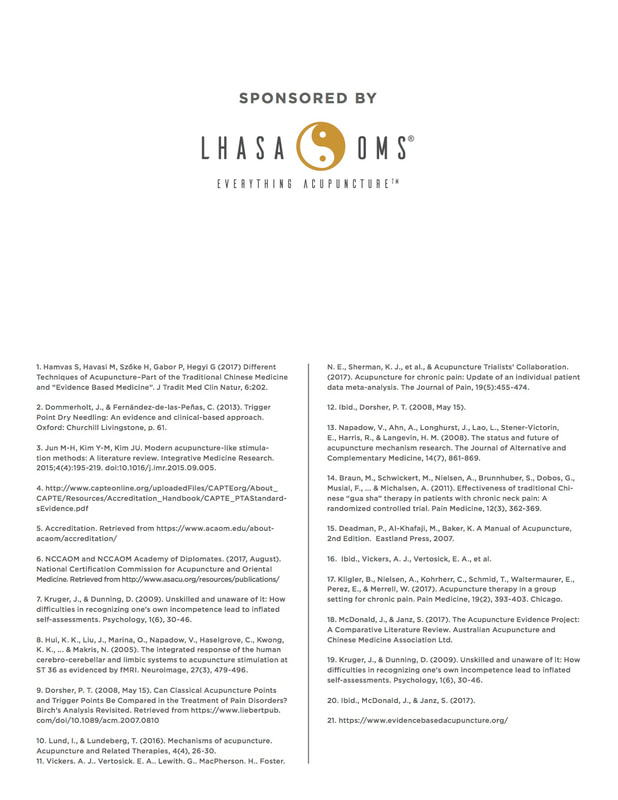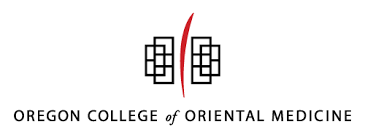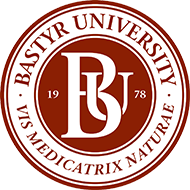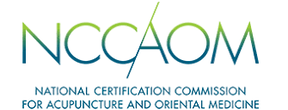Dry Needling
The basis of Dry Needling (DN) includes extensive knowledge of musculoskeletal anatomy and applying needling techniques to relax tight or bound muscles to reduce pain and biomechanical dysfunction. DN can also turn on muscles that have been inhibited (turned off), through the process of injury, to help reestablish normal function of the muscle - ultimately restoring proper biomechanics. DN was originally inspired by the practices of acupuncture orthopedics married with modern physical medicine. Thus moving away from the standard use of hollow hypodermic needle injections of trigger points to a less invasive and less painful treatment of using solid filiform needles used in acupuncture orthopedic needling - hence the name 'dry needling'. Janet Trevell initiated the practice of dry needling when she teamed up with sport medicine acupuncturists during her work developing her text books Myofascial Pain and Dysfunction, The Trigger Point Manual. Most of the early research used as evidence for the practice of DN is based on the positive results of acupuncture studies on pain relief. Though in recent years many references have been replaced with current studies; however, if you look at Trevell's older editions of her books you will find the original acupuncture studies used as evidence for DN.
Why do people keep saying Dry Needling is not Acupuncture?
The practice of DN allows other health professionals to learn and practice this subset of acupuncture without completing a full 4 year master degree in acupuncture. However, when other medical professions gain certification in DN they do not study the extensive medical practice of acupuncture. Since providers do not study acupuncture and DN is a subset of acupuncture, providers need to clearly differentiate DN from acupuncture. Otherwise the general public could think DN providers were practicing acupuncture outside their legal scope of practice. For example, acupuncture treats digestive issues, anxiety, allergies, fertility, insomnia etc and most commonly - musculoskeletal conditions aka pain. While DN specifically treats musculoskeletal issues alone. Unfortunately, the main way providers are differentiating DN from acupuncture is stating that DN is based on science and acupuncture moves 'energy' - which is misleading at best. The practice of Acupuncture has integrated DN techniques throughout several millennia; however, the terminology used to describe DN techniques appears different in classic medical text than it will in modern DN texts. The use of different terminology does not mean that acupuncturist do not have the knowledge or expertise to comprehend and integrate Western medical terminology, it means that the translation of acupuncture medical texts from one language to another requires acupuncturist to have extensive knowledge in both Eastern and Western medicine. In addition, acupuncturist study the standard premed education that includes anatomy, physiology, biology, chemistry, Western pathology, and more. What is more, acupuncture has been researched more than any other complementary medicine.
Training requirements for Dry Needling
The current training standards for dry needling for non-acupuncturist is still being determined. In some states the current standard for the practice of dry needling offers minimal training without a regulatory agency or examining board to monitor public safety and competency. Conversely, the profession of acupuncture is highly regulated and has maintained the best safety ratings of most healthcare professions due to the high level of training and safety standards for acupuncturist nationwide. Choosing an expert with extensive training in the practice of needling ensures that your treatments are extremely safe, effective and pain free. A master degree in acupuncture involves learning the finesse and safety of using filiform acupuncture needles making Acupuncturists the most qualified to practice DN. While other professions, specifically Physical Therapy and Athletic Trainers, focus on movement disorders and manual therapy but does not include puncturing the skin with filiform needles, hence the concern of limited training for such providers (Current proposed training is 325 hours compared to thousand2 of hours for acupuncturist). Acupuncturists are master needlers.
Please read the following document for more specific information on dry needling.
"The relationship between Acupuncture and Dry Needling: Clarifying myths and misinformation"
Why do people keep saying Dry Needling is not Acupuncture?
The practice of DN allows other health professionals to learn and practice this subset of acupuncture without completing a full 4 year master degree in acupuncture. However, when other medical professions gain certification in DN they do not study the extensive medical practice of acupuncture. Since providers do not study acupuncture and DN is a subset of acupuncture, providers need to clearly differentiate DN from acupuncture. Otherwise the general public could think DN providers were practicing acupuncture outside their legal scope of practice. For example, acupuncture treats digestive issues, anxiety, allergies, fertility, insomnia etc and most commonly - musculoskeletal conditions aka pain. While DN specifically treats musculoskeletal issues alone. Unfortunately, the main way providers are differentiating DN from acupuncture is stating that DN is based on science and acupuncture moves 'energy' - which is misleading at best. The practice of Acupuncture has integrated DN techniques throughout several millennia; however, the terminology used to describe DN techniques appears different in classic medical text than it will in modern DN texts. The use of different terminology does not mean that acupuncturist do not have the knowledge or expertise to comprehend and integrate Western medical terminology, it means that the translation of acupuncture medical texts from one language to another requires acupuncturist to have extensive knowledge in both Eastern and Western medicine. In addition, acupuncturist study the standard premed education that includes anatomy, physiology, biology, chemistry, Western pathology, and more. What is more, acupuncture has been researched more than any other complementary medicine.
Training requirements for Dry Needling
The current training standards for dry needling for non-acupuncturist is still being determined. In some states the current standard for the practice of dry needling offers minimal training without a regulatory agency or examining board to monitor public safety and competency. Conversely, the profession of acupuncture is highly regulated and has maintained the best safety ratings of most healthcare professions due to the high level of training and safety standards for acupuncturist nationwide. Choosing an expert with extensive training in the practice of needling ensures that your treatments are extremely safe, effective and pain free. A master degree in acupuncture involves learning the finesse and safety of using filiform acupuncture needles making Acupuncturists the most qualified to practice DN. While other professions, specifically Physical Therapy and Athletic Trainers, focus on movement disorders and manual therapy but does not include puncturing the skin with filiform needles, hence the concern of limited training for such providers (Current proposed training is 325 hours compared to thousand2 of hours for acupuncturist). Acupuncturists are master needlers.
Please read the following document for more specific information on dry needling.
"The relationship between Acupuncture and Dry Needling: Clarifying myths and misinformation"
| |||||||

